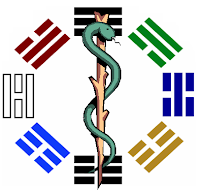Causes & Symptoms
Lyme disease (Lyme borreliosis) is caused by the bacteria Borrelia burgdorferi. Ticks can transmit the bacteria by biting humans. Deer ticks spread Lyme disease in the northeastern and upper midwestern United States, while western black-legged ticks are responsible for its spread along the Pacific coast. Lyme disease and its symptoms can occur at any age. It is most common among young children and those who work or reside in wooded areas because they are more likely to be exposed to the ticks. Expanding skin rash and flu-like symptoms are the earliest symptoms seen. A circular rash may develop at the bite's site but many individuals do not get the rash. If Lyme disease goes undetected or is not properly treated, problems involving the skin, joints, nervous system, and heart may arise. Symptoms may appear weeks after exposure to infection or it mat take months or even years. Other symptoms may include; fatigue, headache and neck stiffness. There may be fever and chills. Swollen lymph nodes and muscle and joint pain are common. As many as 25% of patients have only flu-like symptoms and no other symptoms. Skin rashes may later appear in other areas. Pain, weakness, or numbness in the arms or legs could appear quickly. Paralysis of the facial nerves is not uncommon. Other neurological symptoms may include poor memory and difficulty in concentrating. Heart problems may include palpitations and eye problems usually include conjunctivitis or even deep tissue damage. Joint problems are common in all stages of the disease. If treatment is not started early enough late persistent Lyme disease symptoms may include; chronic fatigue, joint problems, heart symptoms and nervous system problems such as weakness or numbness in the arms or legs and difficulties with memory.
Diagnosis
Lyme disease may be diagnosed based on the symptoms, the medical history, and the possibility of exposure to ticks. Blood tests may confirm the diagnosis if the disease is suspected, however, blood tests are often not reliable to diagnose this condition. Rheumatoid arthritis, chronic fatigue syndrome, fibromyalgia and multiple sclerosis produce similar symptoms and must be considered.
Conventional Medicine Treatment
Treatment should be prompt to prevent permanent damage. Antibiotic treatment for 3-4 weeks with doxycycline or amoxicillin is generally effective in early disease. Intravenous ceftriaxone or penicillin for 4 weeks or more may be needed in cases that were not treated early in the course of the disease. Treatment failures are not uncommon and re-treatment may be necessary.
Complementary Therapies
Complementary medical approaches are used at this center to combat Lyme disease. Auricular Medicine (advanced ear acupuncture) is used to help evaluate the energetic status of the various body organs. Auricular Medicine can also be used in treating the organs affected and to support other vital organs that may be involved in the disease process. Homeopathic remedies may offer an invaluable complementary approach to help the body fight the involved bacteria and its symptoms. This center offers complete evaluation using Auricular Medicine and homeopathic approaches.
